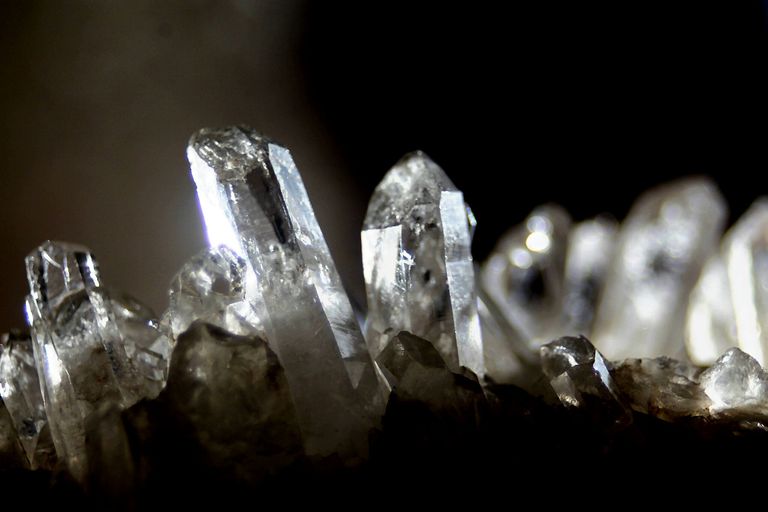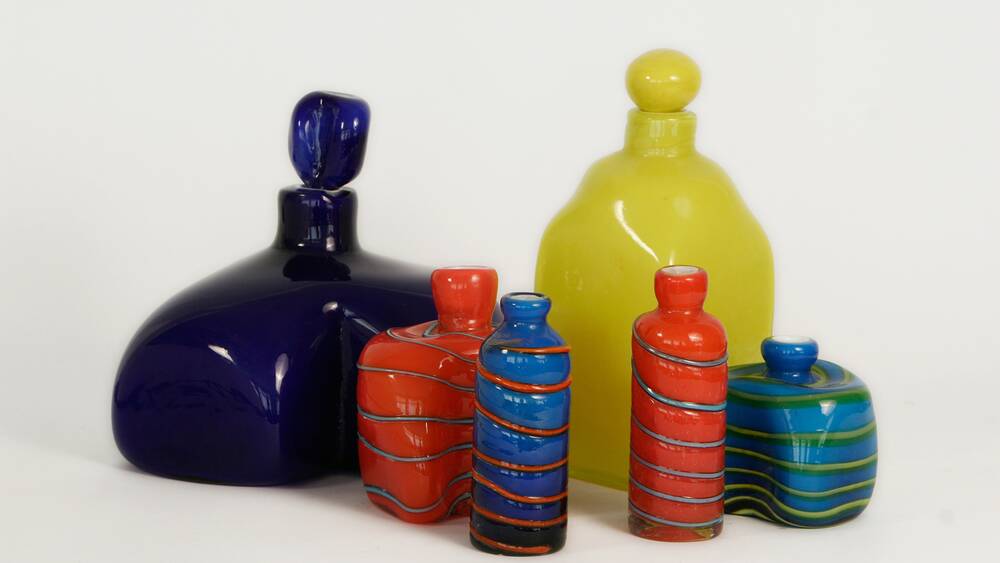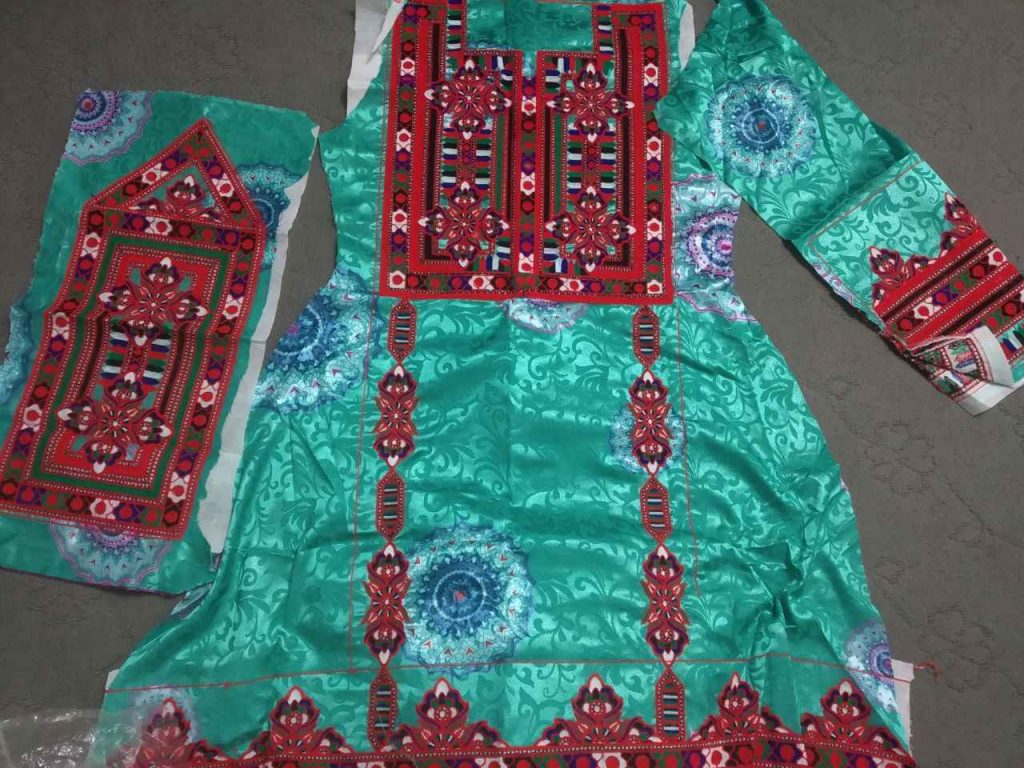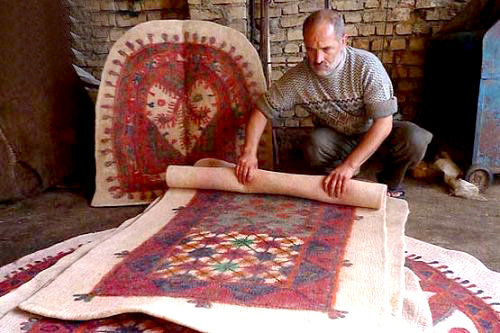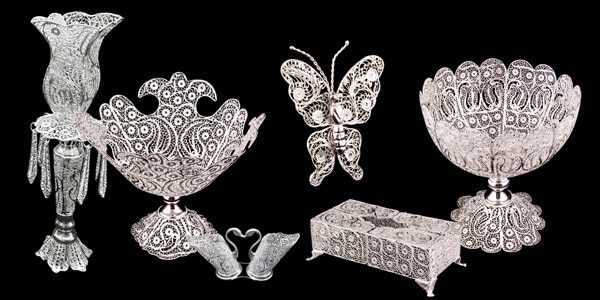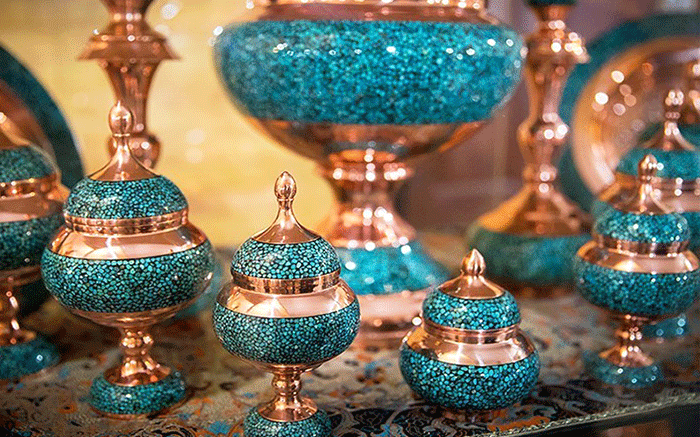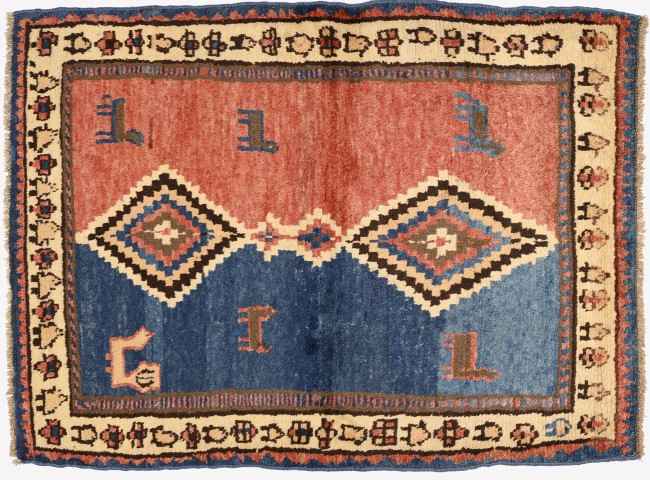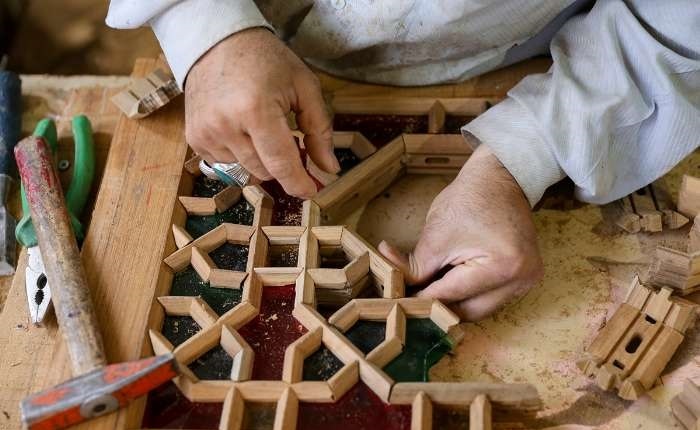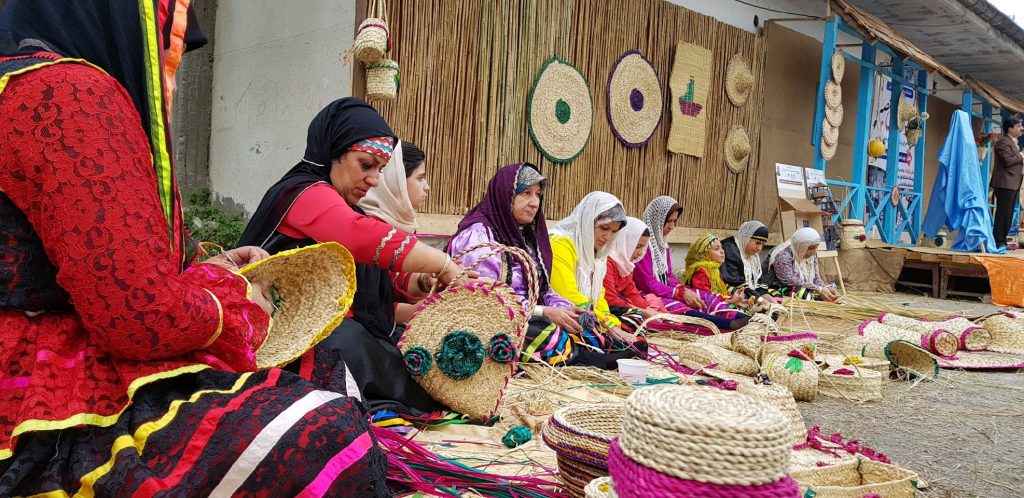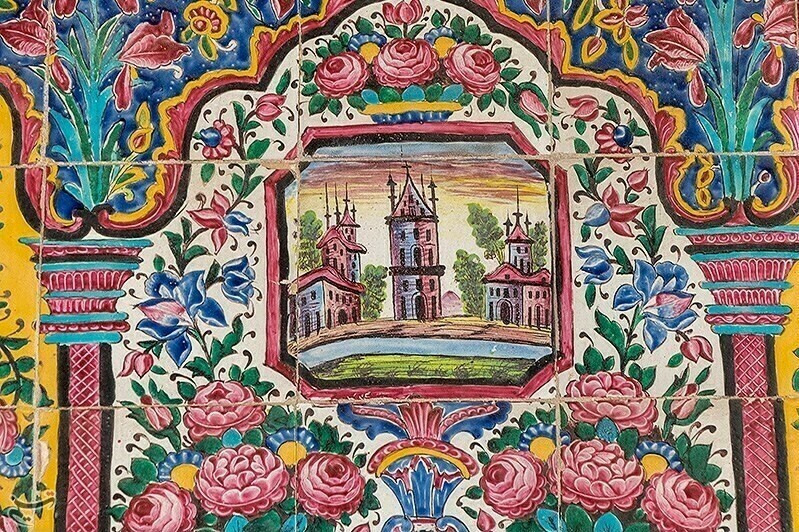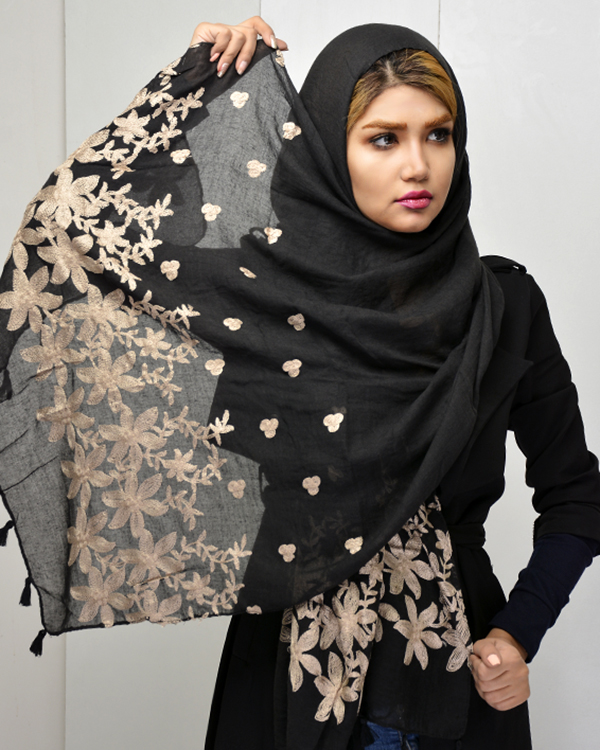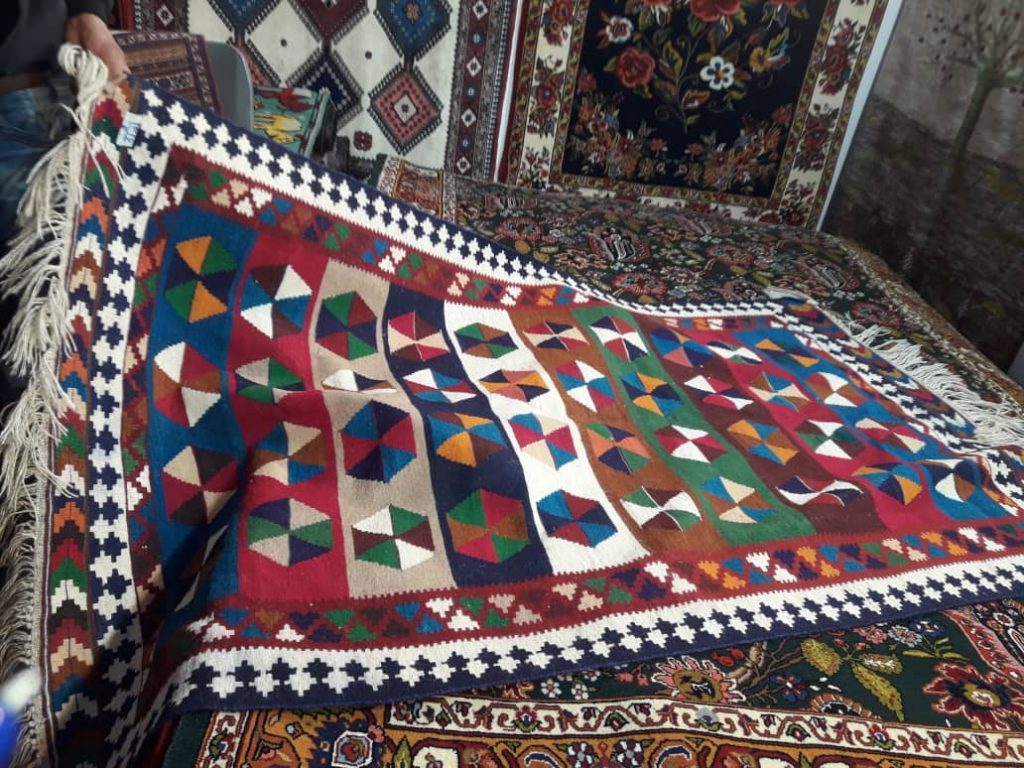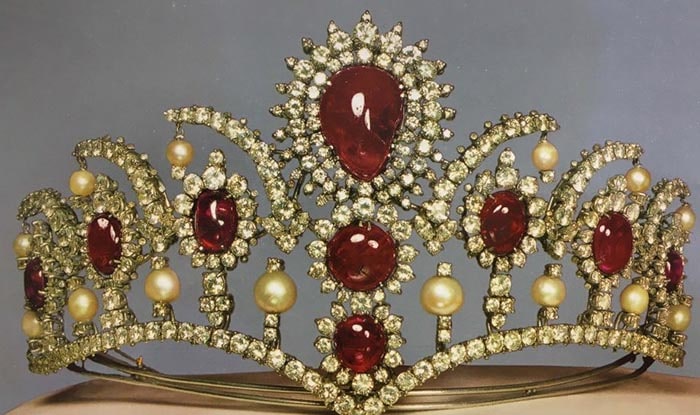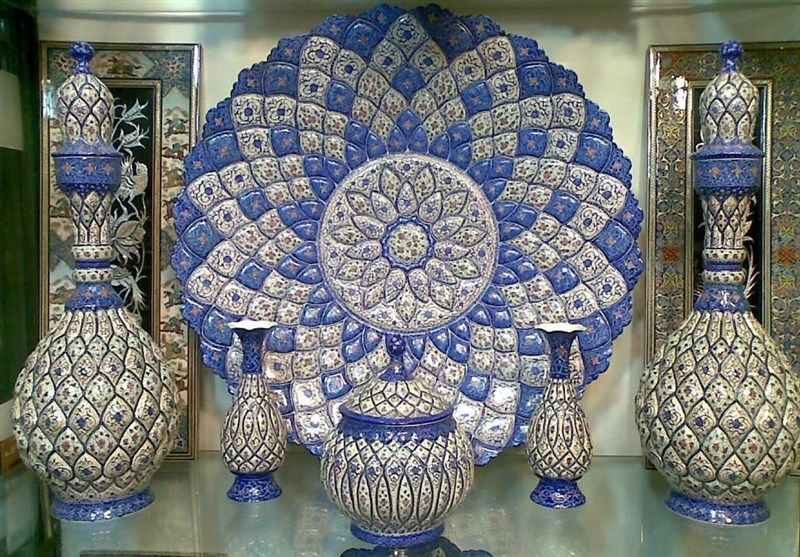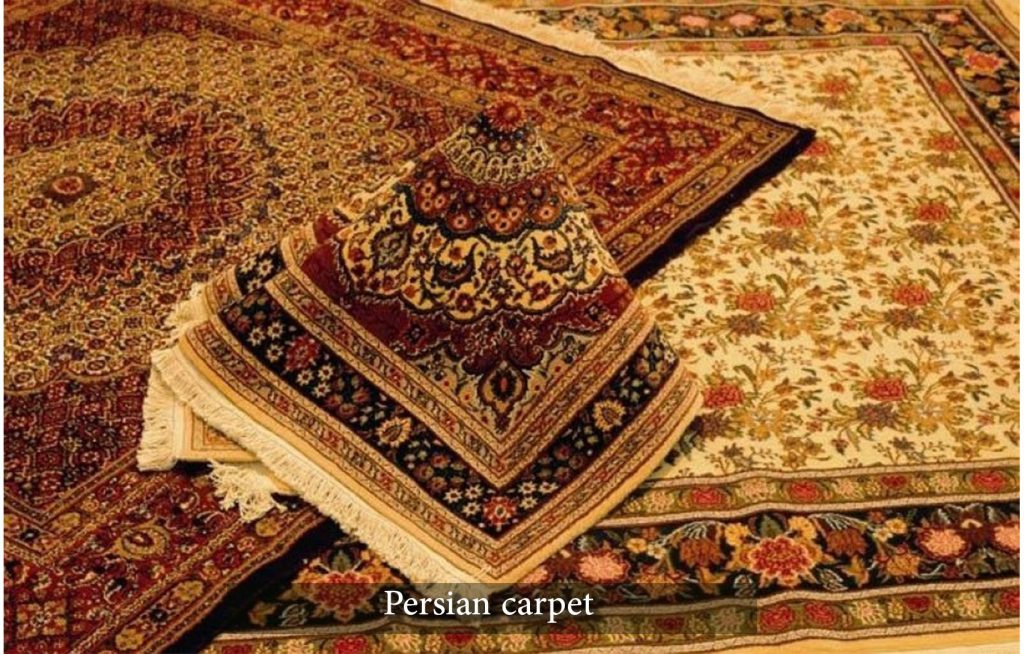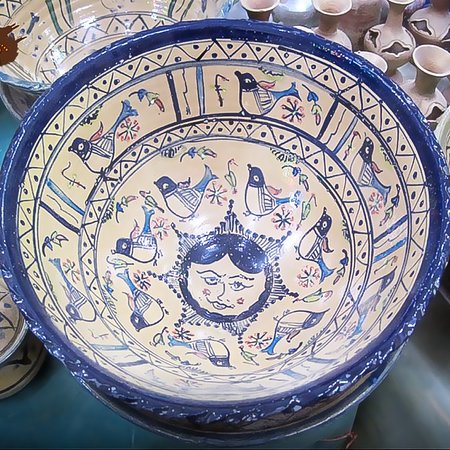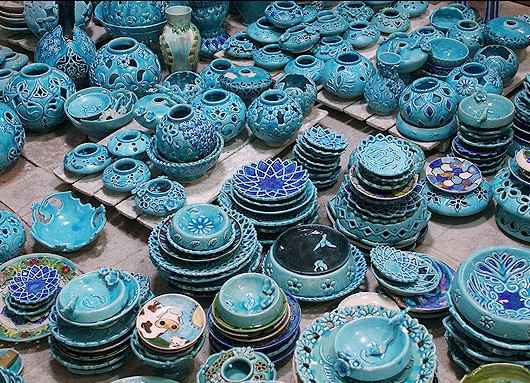Alborz Crystal
Alborz Crystal Glass carving, dating from the Achaemenid dynasty, is one of the most original and common methods of decorating glass works. The craftsmen of the Sasanian period also had great skill in carving glass, so glass works from the Islamic period were influenced by those of ancient Persia. In fact, carving is the oldest
Blown Glass Art
Tehran (Shishegari) Blown Glass Art The artisanal glass industry has a long history in Iran, and researchers date the antiquity of this artistic production to 2000 BC. In fact, the materials discovered in the Ziggurat of Choga Zanbil in Susa, Lorestan, Persepolis and other regions of Iran have shown their claim. The different glass transformation
embroidery
Sistan and Baluchistan embroidery Suzan Duzi from Sistan and Baluchistan The Suzan Duzi of Sistan and Baluchistan is one of the most unique examples of Iranian craftsmanship. Numerous documents show that this embroidery existed since the beginning of the Islamic era in this region of Iran and that it later flourished and developed during the
Felt
Namad Mali of Semnan Felt Processing One of the many handicrafts of Semnan is felt, the production of which dates back to ancient times. The method of making felt is quite similar in different regions of Iran, but sometimes variable in color, pattern and thickness. Felt is known to be the oldest man-made floor covering.
Filigree
Zanjan filigree Malile Kari Filigree is one of the most important applied arts in the province of Zanjan, which consists of welding silver and iron wires. Researchers have traced it back to 550-330 BC. Many filigree objects have been discovered in the treasures of Susa, Hamedan and Jeyhoun, proving that this handicraft has been practiced
Firuzeh Kubi
Firuzeh Kubi (Turquoise Inlay) from Isfahan One of the most popular crafts in Iran is the turquoise inlay. The Firuzeh Kubi consists of small pieces of turquoise stone that are embedded, like a mosaic, in a copper, silver, brass or bronze base, covering the entire base or parts of it. Firuzeh Kubi is a fairly
Gabbeh
Gabbeh of Shiraz and Bushehr Typical floor covering from southern Iran The gabbeh is one of the most popular handicrafts in Iran, especially in cities like Shiraz and Bushehr, very similar to the carpet, but different in pattern, size, color and number of its long and thick fabrics. The patterns on the gabbeh are not
Gereh Chini
Gereh Chini Tehran windows, shutters, drawers and stained glass One of Iran’s traditional decorative crafts is Gereh Chini, which literally means knotting, or the art of placing finely cut pieces of wood on a surface according to a specific pattern. Geometric knots, with rhythmic repetition, are considered an essential part of the Gereh Chini. The
Hasirbafi
Hasirbafi of Bushehr Carpet weaving This handicraft has its roots thousands of years ago in Iran, and it is a type of handicraft that is created in a variety of ways in each region depending on what nature offers. In the areas of Iran where there are palm trees, palm leaves are used, and in
Kashi Haft Rang
Shiraz Kashi Haft Rang (Seven Color Tiles) The tile industry, most used in the ornamentation of many structures and especially in mosques in Iran, has a very ancient history, as does ceramics. According to the objects found, the beginning of the manufacture of tiles dates back to the Achaemenid dynasty, which was common until the
Khameh Duzi
Sistan and Baluchistan Khameh Duzi Traditional embroidery Khameh Duzi is a subcategory of traditional Iranian embroidery. This work is common in the province of Sistan and Baluchistan, especially in the city of Zabol. The word “Khameh”, which has its origin in the word “kham”, which means raw, refers to the fact that raw silk threads
Khorjin
Khorjin from Chaharmahal and Bakhtiari Chaharmahal and Bakhtiari, despite being small in size, are home to two of the most important tribes in Iran: Bakhtiari and Qashqai that have influenced the crafts of other cities. In addition to its use in everyday life, the khorjin, a type of saddlebag, has other uses in the culture
Kilim
The Iranian Kilim The term kilim derives from the Persian word “Gilim.” Kilims are flat, hairless knits that are made by matching the warp and weft. A kilim is a cloth woven by hand from goat or sheep wool and is generally used as a rug. Each region of Iran has its own design, which
Mekhraj Kari
Mashhad Mekhraj Kari Art of creating jewelry with turquoise and other stones There are many gemstone mines in the Khorasan Razavi province and in the surrounding cities. Therefore, one of the most flourishing crafts in this province is the manufacture of jewelry with precious stones known as “Mekhraj Kari”. Some of the most important gemstones
Minakari
Minakari Enamel, brilliant art of fire Minakarí refers to the art of adorning metals such as gold, silver and copper, sometimes also glass and ceramics, with opaque or transparent colored materials. In fact, it can be considered an experimental or workshop art that consists of a series of complex interactions whose final product is a
Persian carpet, a symbol of Iranian culture, art, and authenticity
Persian Carpet The Persian carpet is an artistic representation of Iranian nature, culture, and authenticity. The art of carpet weaving is one of the oldest and most authentic arts among Iranians. As the oldest carpet in the world is considered to be an Iranian work belonging to the Achaemenid period. The point here is that
Yazd pottery
Yazd pottery Ceramic art is one of the most interesting and ancient crafts in Yazd, which due to its history and economic importance, testifies to the artistic taste of the inhabitants of the central region of Iran. In the city of Meybod, in Yazd, in Mend-e Gonabad, in Khorasan, and in Estahban, in Fars, white
Zonouz pottery
Zonouz pottery Zonouz is a city in the eastern Azerbaijan province, near the central district of Marand. In this city there is a kaolin mine that provides the necessary material for the production of ceramics. When kaolin was scarce and the technology to make tools was only available in China, the land of Zonouz was


